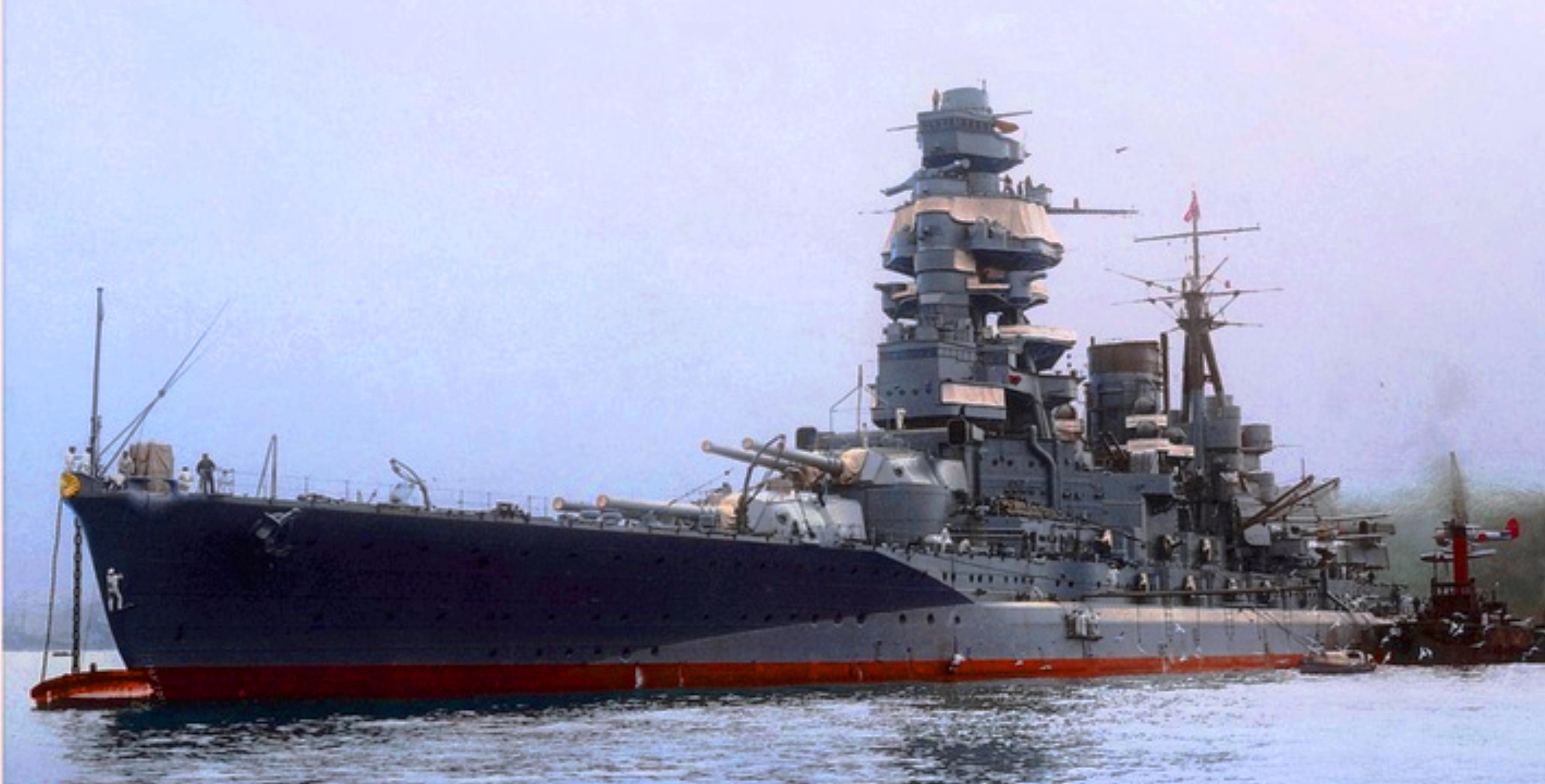
A Japanese sketch of the broken Mutsu on the bottom.
A Japanese sketch of Mutsu’s No 3 main gun turret as
found. Gun, turret and barbette were later salvaged and are currently
exhibited.
Mutsu’s original 41 cm No. 4 turret at the Imperial Japanese Naval Academy, Eta Jima in 1947.
The loss of the battleship Mutsu during the Second World War
was the IJN’s biggest accident with regard to the displacement of the ship and
number of dead.
On 8 June 1943 Mutsu was moored to the buoy for the flagship
near Hashirajima. At about 1210 she was shaken by a major explosion in the
after part of the ship. The hull was severed abaft the No 3 main gun turret by
the force of the explosion. The fore part capsized to starboard and sank. The
stern section rose out of the water and sank more slowly. Four hours after the
explosion Mutsu had disappeared beneath the waves.
When Mutsu exploded and sank the following four ships were
in the vicinity: the battleship Fuso, the light cruiser Tatsuta, and the
destroyers Wakatsuki and Tamanami. At first it was thought that the ship had
been torpedoed by an enemy submarine. Consequently, the destroyers were ordered
to drop depth charges, while at the same time the survivors were rescued. In
addition to her own complement of 1,321, a further 153 men of the 10th Harbour
Defence Unit were on board for training and of the total of 1,474 officers and
men, 1,121 became victims of this catastrophe and only 353 survived.
An investigation committee with Admiral Shiozawa Koichi in
the chair was established and began its enquiry. Basing on the testimony of
survivors, the committee concluded that if a fire had broken out in the
neighbour-hood of the No 3 and No 4 main gun turrets and caused such a
catastrophic explosion, it must have begun in the powder magazine of No 3 main
gun turret. The most likely cause was self-ignition of the Type 3 shell (3
Shiki-Dan) stowed in that magazine.
The Type 3 shell was a shrapnel (Sankai-Dan) shell recently
developed for defence against air attacks. Inside the body of the 40cm shell
there were 735 hollow steel tubes 20mm in diameter with a length of 90mm stacked
in layers and filled with white phosphorus. The incendiary bodies were expelled
forwards from the detonation point and formed a cone-shaped danger zone with a
diameter of up to 240 metres at the end of their trajectory. However, despite
the spectacular visual effects, the danger to an attacking aircraft was low.
Large numbers of Type 3 shells were stowed in the magazines
of battleships and heavy cruisers but, following the destruction of Mutsu, all
had to be landed by order. The investigation committee conducted repeated
experiments at the Kamegakubi Experimental Range of Kure NY in order to confirm
the self-ignition of this shell as the most probable cause of the explosion.
Models of the original size were produced and numerous experiments carried out.
In parallel a colour-burning experiment was executed in the presence of several
dozens of survivors. The colour of the smoke generated by the burning of the
powder of the Type 3 shell was white, while that emitted by the propellant for
the standard projectiles (common and AP) was brown. Mutsu’s survivors confirmed
that the smoke emitted when the magazine exploded was brown. The tests also
failed to generate self-ignition of the Type 3 shell, and it was absolved as
the cause of the loss of Mutsu; as a result, the Type 3 shell was again
embarked on major IJN warships.
A later investigation by divers found that the third main
gun turret and its barbette had been separated from the hull and was damaged.
This discovery served to confirm the assumption that the explosion had taken
place in the powder magazine below No 3 main gun turret. However, the true
cause of the explosion could not be established and is still unknown; again,
arson or decomposition of the propellant were suspected.
The IJN investigated all items relating to naval powder from
the administration to the production including handling and stowage inside the
ship, and there were further attempts to improve safety. A plan to increase
powder production by the simplification of the processes was also postponed,
meaning that the magazine explosion on board Mutsu did have an impact on powder
production planning in the IJN.